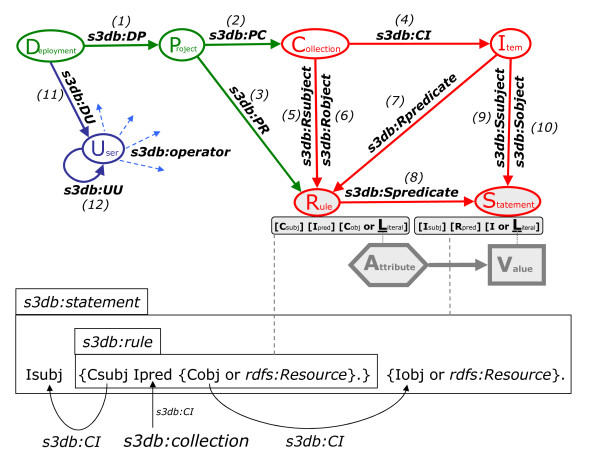Figure 2.
Two views of the S3db core model. Top diagram - solid arrows describe relationship between the seven core entities; Dashed arrows (s3db:operator) indicate operators whose states describe the relationship between users and each of the core entities. Bottom box diagram - detail on the key relationship between s3db:rule and s3db:statement using N3 notation. The s3db:rule is a dyadic predicate and it is also, as a whole, the predicate of the s3db:statement. If the object of the s3db:rule triple is not a Collection, then the object of the Statement that rule predicates will be the attribute's literal value. Otherwise the statement's object is the item of the collection indicated as object of the rule. The statement subject is invariably an item from the collection indicated as subject of the predicate rule. See Table 1 for nomenclature and definitions. In the reference prototype (available at s3db.org), the former situation is indeed handled as a literal in a varchar database field, as noted in the diagram on top as corresponding to the Attribute/Value model nuclei. However, what that signifies as regards the underlying model is that these two objects can be anything, as are therefore more accurately noted as a rdfs:Resource in the box diagram.

